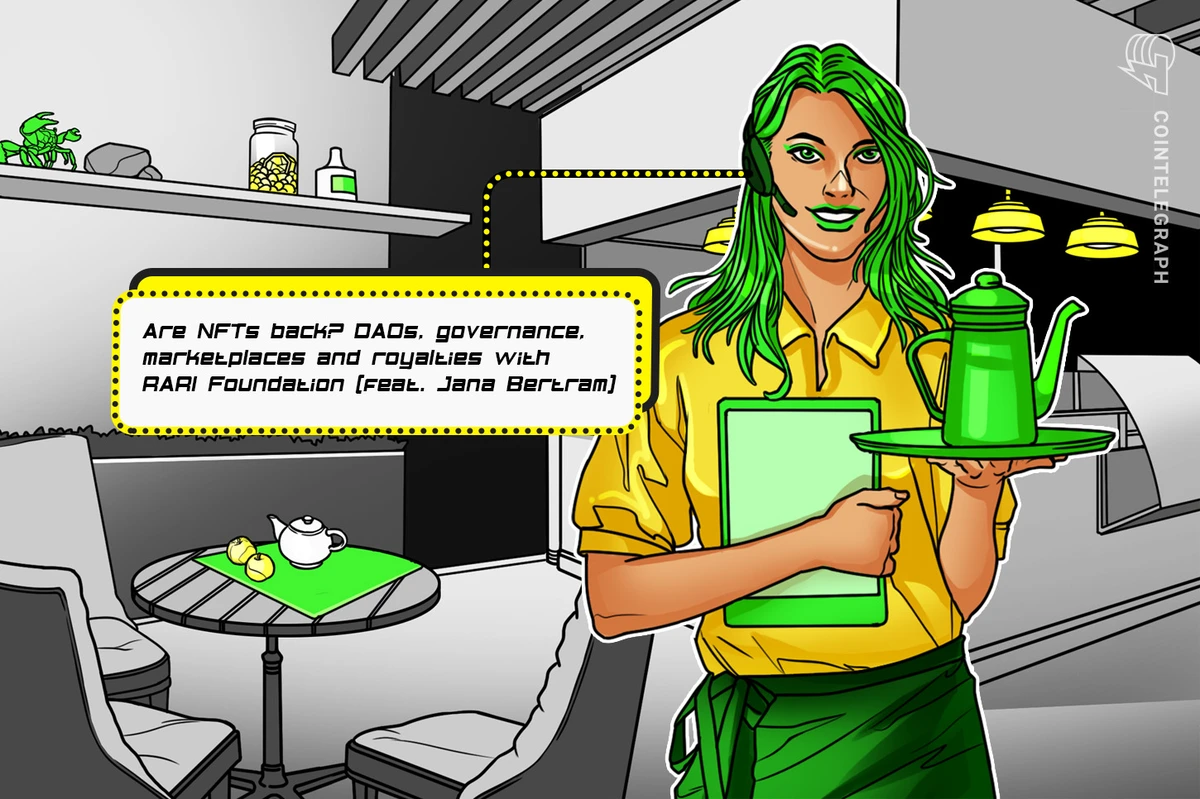DN404 Maximizes the Potential of Divisible NFTs
A team of developers has created DN404, a purportedly more efficient version of the original experimental ERC-404 Ethereum standard that aims to merge tokens and NFTs.Beware ERC-404, a new hybrid NFT standard has arrived!
Blockchain technology continues to evolve rapidly, with developers constantly pushing the boundaries of what is possible. Just a week after the launch of ERC-404, a new unofficial Ethereum standard that aimed to combine the functionalities of fungible and nonfungible tokens (NFTs), another team of developers has stepped up to claim that they have done it even better with DN404.
A New Standard for Divisible NFTs
DN404, also known as the “Divisible NFT” standard, takes inspiration from its ERC-404 rival and aims to be a hybrid ERC-20/721 token. The main goal of this proposed standard is to allow NFT holders to trade fractionalized portions of their NFTs with others. It offers a native fractionalization feature built into the token standard itself, making it more efficient and less prone to breaking.
The brains behind DN404, pseudonymous developer “cygaar,” expressed their dissatisfaction with ERC-404, stating that while it has gained popularity, it lacks adherence to existing standards and proves inefficient in certain edge cases. In response, cygaar and their team set out to create a token standard that not only acts as an NFT but also provides seamless fractionalization capabilities.
How Does DN404 Work?
Unlike ERC-404, which requires protocols to implement it in order to ensure proper functionality, DN404 takes a different approach. DN404 uses two contracts: a “base” ERC-20 and a “mirror” ERC-721. This unique combination allows for full compliance with existing protocols “out of the box.”
- CryptoPunks has announced the launch of its Punk In Residence Incubator Program. In addition, here is some more news on NFTs.
- The Unofficial ERC-404: A Hybrid of Fungible and Non-Fungible Tokens
- 9GAG CEO Ray Chan Purchases Stephen Chow “Nobody” NFT at 3,155% Premium
The majority of trading using DN404 happens on the ERC-20 contract, trading fractions of the NFTs. Whenever base ERC-20 tokens are transferred, the mirrored NFTs are automatically burned and minted accordingly. A wallet holding at least one base unit of the token will receive an NFT on the mirrored contract, while NFTs will be burned if the wallet holds less than the minimum base unit amount. This innovative approach eliminates the need for intermediaries while enabling NFTs to be traded on both NFT and decentralized exchanges.
Safety Concerns and Future Outlook
Before diving headfirst into using DN404, it’s important to note that the code has not been formally audited. Users should exercise caution and understand the potential risks associated with using new and untested technologies.
Despite this caution, DN404 shows great promise in maximizing the potential of divisible NFTs. With its superior design and adherence to standards, DN404 may gain an edge over its rivals. As adoption grows, we can expect to see developers, artists, and collectors embracing this new standard and exploring the exciting possibilities offered by fractionalized NFTs.
Q&A: Addressing Readers’ Concerns
Q: How do fractionalized NFTs differ from regular NFTs? A: Fractionalized NFTs allow for trading and ownership of smaller portions of an NFT, making them more accessible and liquid. Regular NFTs represent whole assets and cannot be divided.
Q: Can fractionalized NFTs be used in decentralized finance (DeFi) applications? A: Yes, fractionalized NFTs can be incorporated into DeFi protocols, allowing users to utilize their NFTs for lending, earning interest, and other financial activities.
Q: Are there any risks associated with using DN404? A: As mentioned earlier, DN404 has not undergone formal auditing. Therefore, there might be undiscovered vulnerabilities or unforeseen issues that could potentially pose risks to users. Use it with caution and stay updated on any developments or security recommendations.
Future Outlook and Investment Recommendations
As the world of NFTs continues to gain mainstream attention, the demand for more flexible and versatile token standards is on the rise. DN404 presents a compelling solution that addresses the limitations of existing standards and opens up new possibilities for the NFT market.
Investors and creators alike should keep a close eye on developments surrounding DN404 and other divisible NFT standards. Integrating fractionalized NFTs into existing platforms and exploring innovative applications can lead to exciting opportunities. However, it is crucial to conduct thorough research and make informed decisions when investing or participating in this evolving landscape.
References
- ERC-404 hybrid NFT tokens find ‘the sweet spot’ as an EIP push says dev
- Tweet by 0xCygaar
- Tweet by 0xCygaar
- Tweet by 0xQuit
- Treat your first NFT purchase like a first date’ — NFT Collector Suzanne
Hey readers, what are your thoughts on DN404 and its potential in the NFT market? Do you see fractionalized NFTs as a game-changer? Share your insights below! And don’t forget to share this article on your favorite social media platforms to spread the word about the fascinating world of divisible NFTs. 🚀💎
We will continue to update Blocking; if you have any questions or suggestions, please contact us!
Was this article helpful?
93 out of 132 found this helpful
Related articles
- Stephen Chow’s “Nobody” NFT Collection Takes Off, Trading Activity Reaches 10,000 ETH
- Taproot Wizards achieved success despite facing technical difficulties during its debut. The company managed to sell Bitcoin NFTs worth $11 million.
- Sberbank Launches Digital Assets and NFT Platform in Russia
- The Ultimate Guide to Creating NFTs and BRC-20 Tokens
- NFT Collector Suzanne: From CryptoPunks to Fidenzas
- In this article, we’ll be diving into a few interesting topics the Bitcoin NFT debacle, Vitalik’s 30th birthday celebration, Farcaster Frames, and the concept of ‘private mempools.’ Stay tuned for an entertaining and informative read!
- Reaping the Rewards: Microcosms NFT Offers More Than Just Digital Art





